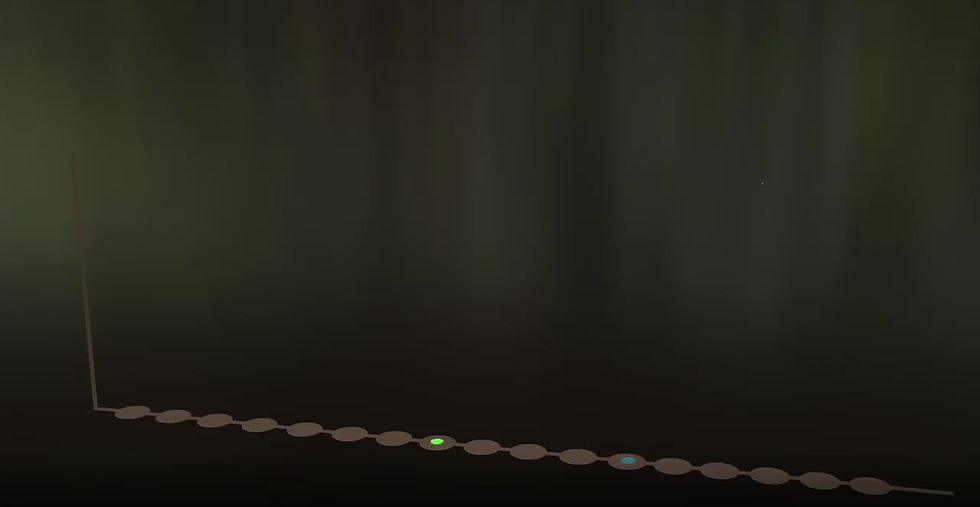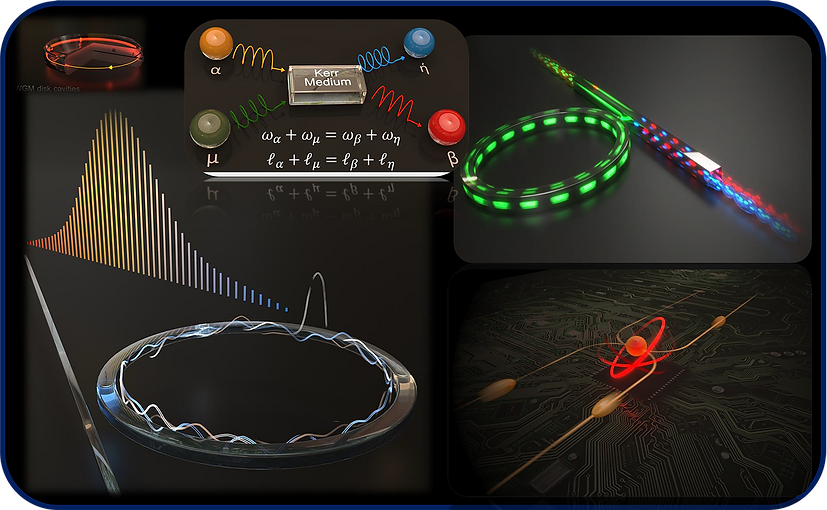

For the past two decades, optical methodologies have advanced the development of highly pure microwave and millimeter-wave emitters. The emergence of optical frequency combs from femtosecond lasers has bridged the Lightwave and microwave spectra, transforming time and frequency metrology. While the potential of such combs has been established, their practical applications are still predominantly research centric. Modern research focuses on using ultra-high Q resonators, enhancing the nonlinear Kerr effect, to generate these combs. Their coherence, and thus phase noise performance, is crucial for microwave synthesis. Our studies delve into enhancing this coherence and exploring the versatile applications of Kerr combs in photonics. Kerr combs can offer superior stability, both short-term and long-term, making them promising candidates for future oscillators and timing devices.
Our study also involves designing and building chip-integrated quantum light sources that can generate compressed and entangled photon states. Using cutting-edge photonic circuitry, these quantum states are controlled in a coherent way on-chip through linear and nonlinear photonic paths. Such progress opens the door to a wide range of uses in many different areas. These include analog quantum simulations that model complex quantum systems, quantum-enhanced sensing and spectroscopy techniques for more accurate measurements, scalable quantum computing architectures for solving hard problems, and secure, efficient quantum networks for sending information